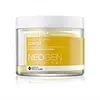What's inside
What's inside
 Key Ingredients
Key Ingredients

 Benefits
Benefits

 Concerns
Concerns

 Ingredients Side-by-side
Ingredients Side-by-side

Water
Skin ConditioningButylene Glycol
HumectantGlycerin
HumectantCitrus Limon Fruit Extract
MaskingPhenoxyethanol
PreservativeEthylhexylglycerin
Skin ConditioningAlcohol Denat.
AntimicrobialPEG/PPG-17/6 Copolymer
SolventSodium Hyaluronate
HumectantMelissa Officinalis Leaf Extract
Skin ConditioningCymbopogon Citratus Extract
Skin ConditioningCitrus Unshiu Peel Extract
MaskingCitrus Aurantium Dulcis Fruit Extract
MaskingCarica Papaya Fruit Extract
Skin ConditioningTricholoma Matsutake Extract
Skin ConditioningCordyceps Sinensis Extract
AntioxidantCitrus Paradisi Fruit Extract
Skin ConditioningPisum Sativum Extract
Skin ConditioningGlycine Soja Seed Extract
Skin ConditioningVitis Vinifera Fruit Extract
Skin ConditioningSaururus Chinensis Leaf/Root Extract
AntimicrobialArnica Montana Flower Extract
MaskingArtemisia Absinthium Extract
Skin ConditioningBroussonetia Kazinoki Bark Extract
Skin ConditioningCoptis Chinensis Root Extract
AntioxidantPEG-60 Hydrogenated Castor Oil
EmulsifyingCarbomer
Emulsion StabilisingTartaric Acid
BufferingGlycolic Acid
BufferingLactic Acid
BufferingTromethamine
BufferingDisodium EDTA
Benzophenone-5
UV AbsorberCI 19140
Cosmetic ColorantCI 17200
Cosmetic ColorantParfum
MaskingWater, Butylene Glycol, Glycerin, Citrus Limon Fruit Extract, Phenoxyethanol, Ethylhexylglycerin, Alcohol Denat., PEG/PPG-17/6 Copolymer, Sodium Hyaluronate, Melissa Officinalis Leaf Extract, Cymbopogon Citratus Extract, Citrus Unshiu Peel Extract, Citrus Aurantium Dulcis Fruit Extract, Carica Papaya Fruit Extract, Tricholoma Matsutake Extract, Cordyceps Sinensis Extract, Citrus Paradisi Fruit Extract, Pisum Sativum Extract, Glycine Soja Seed Extract, Vitis Vinifera Fruit Extract, Saururus Chinensis Leaf/Root Extract, Arnica Montana Flower Extract, Artemisia Absinthium Extract, Broussonetia Kazinoki Bark Extract, Coptis Chinensis Root Extract, PEG-60 Hydrogenated Castor Oil, Carbomer, Tartaric Acid, Glycolic Acid, Lactic Acid, Tromethamine, Disodium EDTA, Benzophenone-5, CI 19140, CI 17200, Parfum
PEG-8
HumectantSodium Bicarbonate
AbrasiveMagnesium Oxide
AbsorbentEthoxydiglycol
HumectantGlycerin
HumectantButylene Glycol
HumectantOleth-20
CleansingTrihydroxystearin
Skin ConditioningGlyceryl Stearate
EmollientPEG-100 Stearate
Paraffinum Liquidum
EmollientWater
Skin ConditioningTocopheryl Acetate
AntioxidantMelaleuca Alternifolia Leaf Oil
AntioxidantGlycine Soja Sterols
EmollientParfum
MaskingLimonene
PerfumingLinalool
PerfumingAscorbyl Palmitate
AntioxidantRetinyl Palmitate
Skin ConditioningStearyl Glycyrrhetinate
Skin ConditioningTetrahexyldecyl Ascorbate
AntioxidantCaprylic/Capric Triglyceride
MaskingLinoleic Acid
CleansingPhospholipids
Skin ConditioningPhenoxyethanol
PreservativeCI 61565
Cosmetic ColorantPEG-8, Sodium Bicarbonate, Magnesium Oxide, Ethoxydiglycol, Glycerin, Butylene Glycol, Oleth-20, Trihydroxystearin, Glyceryl Stearate, PEG-100 Stearate, Paraffinum Liquidum, Water, Tocopheryl Acetate, Melaleuca Alternifolia Leaf Oil, Glycine Soja Sterols, Parfum, Limonene, Linalool, Ascorbyl Palmitate, Retinyl Palmitate, Stearyl Glycyrrhetinate, Tetrahexyldecyl Ascorbate, Caprylic/Capric Triglyceride, Linoleic Acid, Phospholipids, Phenoxyethanol, CI 61565
 Reviews
Reviews

Ingredients Explained
These ingredients are found in both products.
Ingredients higher up in an ingredient list are typically present in a larger amount.
Butylene Glycol (or BG) is used within cosmetic products for a few different reasons:
Overall, Butylene Glycol is a safe and well-rounded ingredient that works well with other ingredients.
Though this ingredient works well with most skin types, some people with sensitive skin may experience a reaction such as allergic rashes, closed comedones, or itchiness.
Learn more about Butylene GlycolGlycerin is already naturally found in your skin. It helps moisturize and protect your skin.
A study from 2016 found glycerin to be more effective as a humectant than AHAs and hyaluronic acid.
As a humectant, it helps the skin stay hydrated by pulling moisture to your skin. The low molecular weight of glycerin allows it to pull moisture into the deeper layers of your skin.
Hydrated skin improves your skin barrier; Your skin barrier helps protect against irritants and bacteria.
Glycerin has also been found to have antimicrobial and antiviral properties. Due to these properties, glycerin is often used in wound and burn treatments.
In cosmetics, glycerin is usually derived from plants such as soybean or palm. However, it can also be sourced from animals, such as tallow or animal fat.
This ingredient is organic, colorless, odorless, and non-toxic.
Glycerin is the name for this ingredient in American English. British English uses Glycerol/Glycerine.
Learn more about GlycerinParfum is a catch-all term for an ingredient or more that is used to give a scent to products.
Also called "fragrance", this ingredient can be a blend of hundreds of chemicals or plant oils. This means every product with "fragrance" or "parfum" in the ingredients list is a different mixture.
For instance, Habanolide is a proprietary trade name for a specific aroma chemical. When used as a fragrance ingredient in cosmetics, most aroma chemicals fall under the broad labeling category of “FRAGRANCE” or “PARFUM” according to EU and US regulations.
The term 'parfum' or 'fragrance' is not regulated in many countries. In many cases, it is up to the brand to define this term.
For instance, many brands choose to label themselves as "fragrance-free" because they are not using synthetic fragrances. However, their products may still contain ingredients such as essential oils that are considered a fragrance by INCI standards.
One example is Calendula flower extract. Calendula is an essential oil that still imparts a scent or 'fragrance'.
Depending on the blend, the ingredients in the mixture can cause allergies and sensitivities on the skin. Some ingredients that are known EU allergens include linalool and citronellol.
Parfum can also be used to mask or cover an unpleasant scent.
The bottom line is: not all fragrances/parfum/ingredients are created equally. If you are worried about fragrances, we recommend taking a closer look at an ingredient. And of course, we always recommend speaking with a professional.
Learn more about ParfumPhenoxyethanol is a preservative that has germicide, antimicrobial, and aromatic properties. Studies show that phenoxyethanol can prevent microbial growth. By itself, it has a scent that is similar to that of a rose.
It's often used in formulations along with Caprylyl Glycol to preserve the shelf life of products.
Water. It's the most common cosmetic ingredient of all. You'll usually see it at the top of ingredient lists, meaning that it makes up the largest part of the product.
So why is it so popular? Water most often acts as a solvent - this means that it helps dissolve other ingredients into the formulation.
You'll also recognize water as that liquid we all need to stay alive. If you see this, drink a glass of water. Stay hydrated!
Learn more about Water